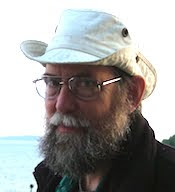The story is told that C. S. Lewis once compared ordinary moral standards to those in a caricaturedly brutal English boys boarding school. He speculated that the boys who were scorned in the school for hewing to the moral standards which they'd be expected to exhibit as adult English gentlemen were analogous to the few saints in the wider community who hewed, much more closely than the general population, to the Golden Rule, and that when we learned how it would have been appropriate to behave, we'd find that the saints were just ordinary folks, doing what ordinary folks should have ordinarily done.
Of course, for Lewis, this revelation would have come in post-mortem conversations with God in Heaven, but calculations of the ecological footprint of humanity demonstrate that humanity is currently boarding on the planet Earth, but not really planning to live here, and that a wide range of our conventional ways of acting are barbarically inappropriate if we or various other species are to hope to persist, and that many of our attempts to slow the growth of our footprint are caricatures of what would be necessary to actually reduce it.
One of the signs of residency is knowing who the neighbours are, and this makes regional, provincial, or national natural history museums, where the identity and lifestyles of our non-human neighbours are worked out, the primary instruments of political sovereignty, and the place where humanity learns what's going on (by "museum" we mean mostly the collections and studies accessed by the back door of the institution, not the displays, administration, and programmes accessed by the front door).
The immediate duty of the natural history museum is collecting and curation: finding, preserving, labelling, and cataloging samples of populations of the neighbours so that it can be known who, where, and when they were. In my experience the most prominent feature of attempts at curation is interruption, so uninterrupted quiet curatorial time becomes an idealistic goal, where, like Buddha under the Bo tree, one loses oneself in the repetitive little details of work that is cumulatively critical for understanding the world. There's also a similar timelessness to this work, since specimens, and natural history data, are meant to last for as long as anything humanity can foresee, so that a mistake made today has the potential to propagate error centuries into the future.
I guess that Aleta and I were launched on this idealistic experiment when we resolved, around 1977, to work for the National Museum Canada required, regardless of the administrative incarnation the actual institution was subject to. Our duties in this position have included transCanada collecting trips through the 1980s, the attempt to found a local all-taxon biotic inventory project in the 1990s, and a regional natural history museum in 1999-2005.
We like to think that each of these ventures has taught us a little something about the interface between idealism and its ambient society, so perhaps the present venture of heading back, Thirty Years Later, to places we've visited before, documenting this with a-painting-a-day, and trolling for support for a national organization dedicated to long-term natural history monitoring, will be more effective than the other ventures have been, and will result in freedom to take at least a modicum of quiet curatorial time to deal with specimens, data, and writing-up of our results.
Tuesday, April 27, 2010
Subscribe to:
Posts (Atom)
